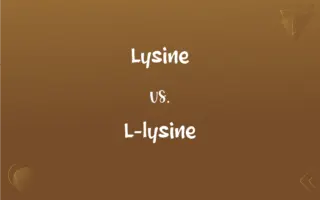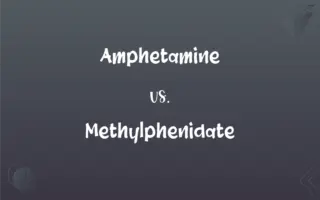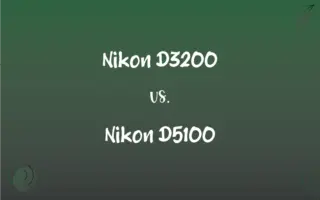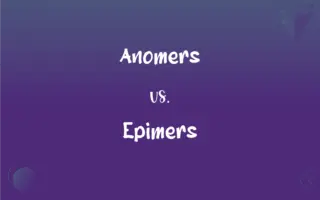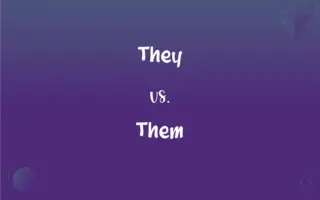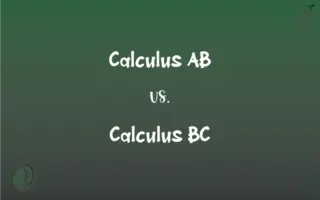Classroom vs. Class: What's the Difference?
Edited by Aimie Carlson || By Janet White || Updated on November 30, 2023
A classroom is a physical space where learning occurs, while a class refers to a group of students, a course of study, or a period of instruction.

Key Differences
A classroom is typically a room within a school or educational institution where teaching and learning activities occur. Conversely, a class can refer to the group of students who gather in the classroom for educational purposes.
The design of a classroom often includes desks, a blackboard, and educational resources, facilitating an environment conducive to learning. In contrast, a class, as an academic term, denotes either the curriculum being taught or the students enrolled in a particular course.
A classroom remains a static physical location, while the concept of a class is more dynamic, encompassing the interaction between students and teachers, the subject taught, and the academic level of the course.
Modern classrooms may also extend to virtual spaces for online learning, but still serve the primary purpose of providing a setting for education. A class, however, might not be bound to a specific location and can occur in various settings, both physical and online.
The effectiveness of a classroom depends on its physical and technological setup to support learning, whereas the success of a class is more reliant on the teacher's skill, the course content, and student engagement.
ADVERTISEMENT
Comparison Chart
Definition
Physical or virtual space for learning
Group of students or period of instruction
Dependence
On its layout and resources
On teacher, curriculum, and students
Variation
In size, design, and technology
In subject, level, and duration
Location
Fixed or online
Anywhere learning occurs
Primary Function
To provide an environment for education
To facilitate teaching and learning
ADVERTISEMENT
Classroom and Class Definitions
Classroom
A classroom is a setting where teachers and students meet for lessons.
Their classroom had a colorful mural on the wall.
Class
A class can refer to a course of study in a particular subject.
She enrolled in a history class for the fall semester.
Classroom
A classroom is an environment created to facilitate students' learning.
The classroom was buzzing with excitement over the upcoming project.
Class
A class may also refer to the quality or rank of something.
The restaurant was known for its class and excellent service.
Classroom
A classroom is a room, typically in a school, used for teaching and learning.
The new classroom was equipped with the latest technology.
Class
A class is a group of students who are taught together.
The class eagerly awaited the start of the experiment.
Classroom
A classroom can be a physical or virtual space designed for education.
The virtual classroom allowed students from different countries to interact.
Class
A class can denote a level of education or a division of students.
The fourth-grade class excelled in their reading assessments.
Classroom
A classroom is a designated space where educational instruction takes place.
The students decorated their classroom for the science fair.
Class
A class is a period of time set aside for instruction in a subject.
The class on molecular biology was scheduled for Mondays and Wednesdays.
Classroom
A room or place especially in a school in which classes are conducted
A second-floor classroom.
An outdoor classroom.
Class
A set, collection, group, or configuration containing members regarded as having certain attributes or traits in common; a kind or category.
Classroom
A room, often in a school, where classes take place
Class
A grade of mail
A package sent third class.
Classroom
A room in a school where lessons take place
FAQs
What is a classroom?
A classroom is a space where educational activities take place.
What makes a good classroom?
Effective design, appropriate resources, and a conducive learning environment.
What does class mean in an educational context?
It refers to a group of students, a course of study, or a teaching session.
Are classrooms important for learning?
Yes, they provide the physical or virtual environment for educational activities.
Can classrooms be online?
Yes, virtual spaces for learning are also considered classrooms.
What's the role of a teacher in a class?
To guide, instruct, and facilitate learning among students.
How have classrooms evolved over time?
They have incorporated technology and adapted to various teaching methods.
Is a class always in a classroom?
Not always; a class can occur in various settings, including outdoors.
Can a classroom be used for multiple classes?
Yes, one classroom can host different classes at different times.
What constitutes a class in school?
It includes the students, the subject taught, and the period of instruction.
How important is class size?
Class size can affect the quality of instruction and individual attention.
What technology is used in modern classrooms?
Interactive whiteboards, computers, and online learning platforms.
How long does a typical class last?
Class duration varies, typically ranging from 30 minutes to several hours.
Can a class be self-taught?
Yes, especially with the availability of online resources and courses.
Is class attendance important?
Regular attendance is crucial for effective learning and progress.
Are classrooms only for academic subjects?
No, they can be used for various subjects, including arts and physical education.
Do classrooms always have desks and chairs?
Typically, yes, but modern classrooms may have different setups.
Can one be in a class outside school?
Yes, classes can occur in community centers, online, or other venues.
Can a class exist without a physical classroom?
Yes, especially with online and remote learning options.
What's the impact of classroom design on learning?
Good design can enhance focus, comfort, and engagement in learning.
About Author
Written by
Janet WhiteJanet White has been an esteemed writer and blogger for Difference Wiki. Holding a Master's degree in Science and Medical Journalism from the prestigious Boston University, she has consistently demonstrated her expertise and passion for her field. When she's not immersed in her work, Janet relishes her time exercising, delving into a good book, and cherishing moments with friends and family.
Edited by
Aimie CarlsonAimie Carlson, holding a master's degree in English literature, is a fervent English language enthusiast. She lends her writing talents to Difference Wiki, a prominent website that specializes in comparisons, offering readers insightful analyses that both captivate and inform.






















